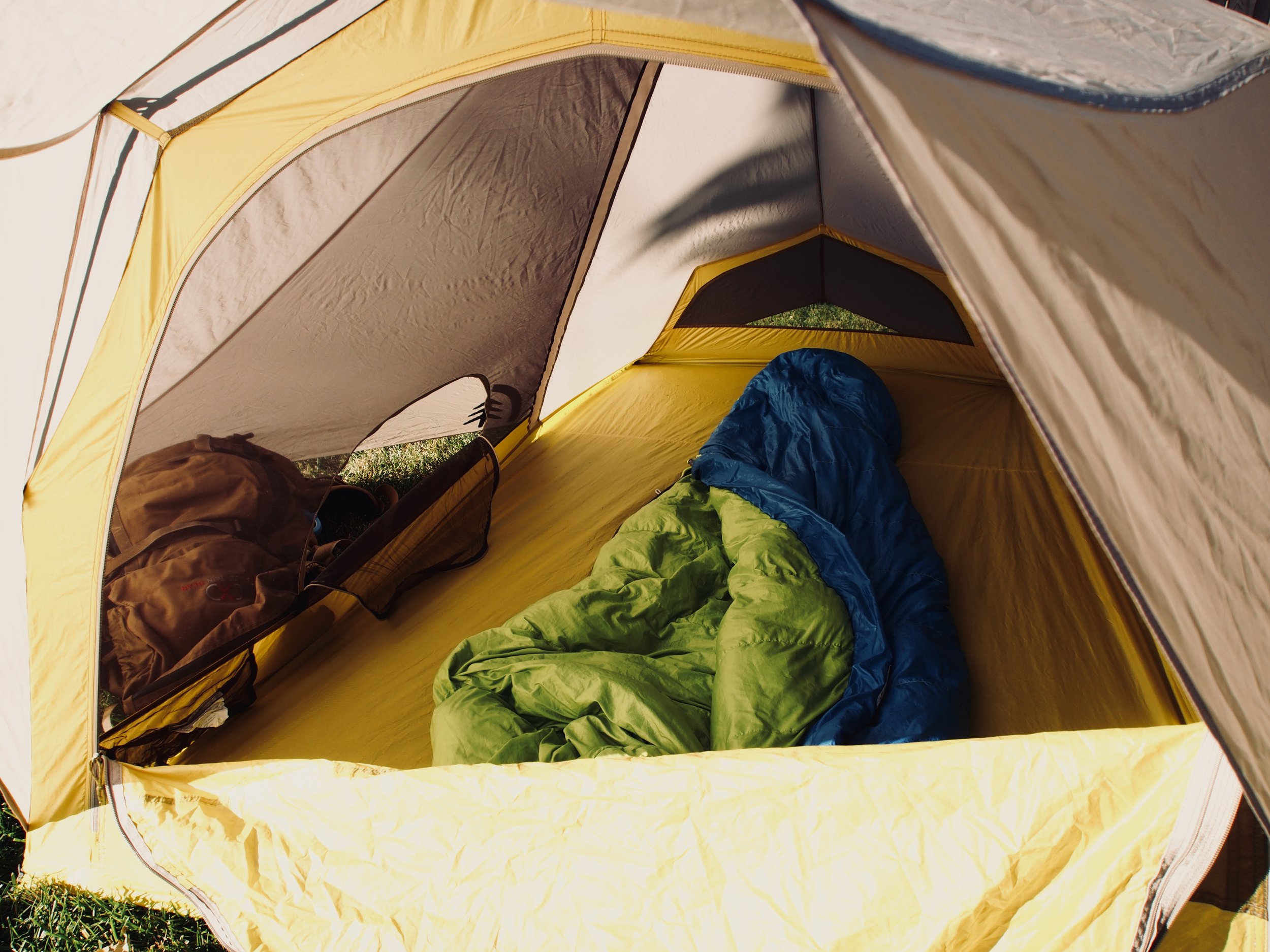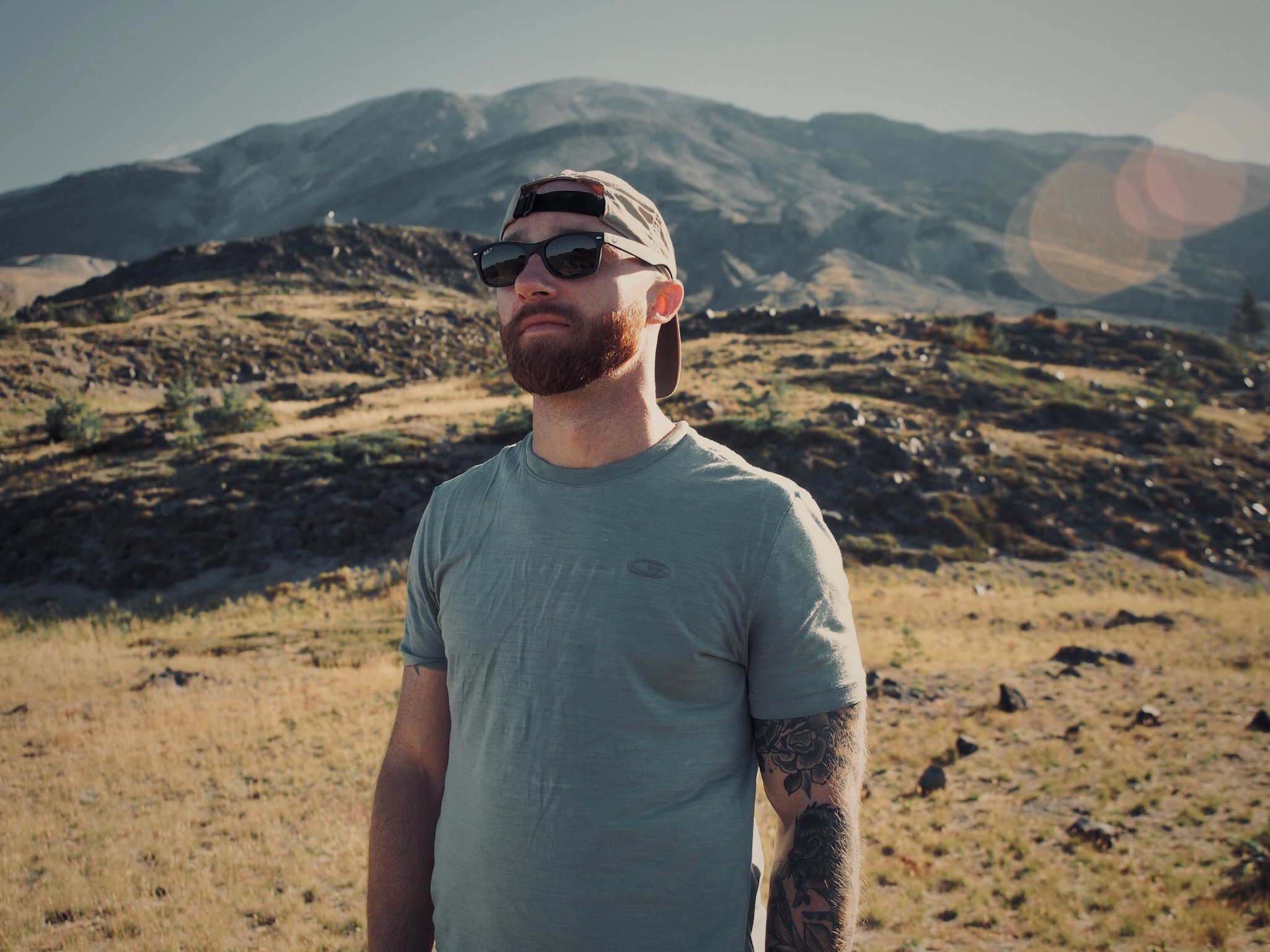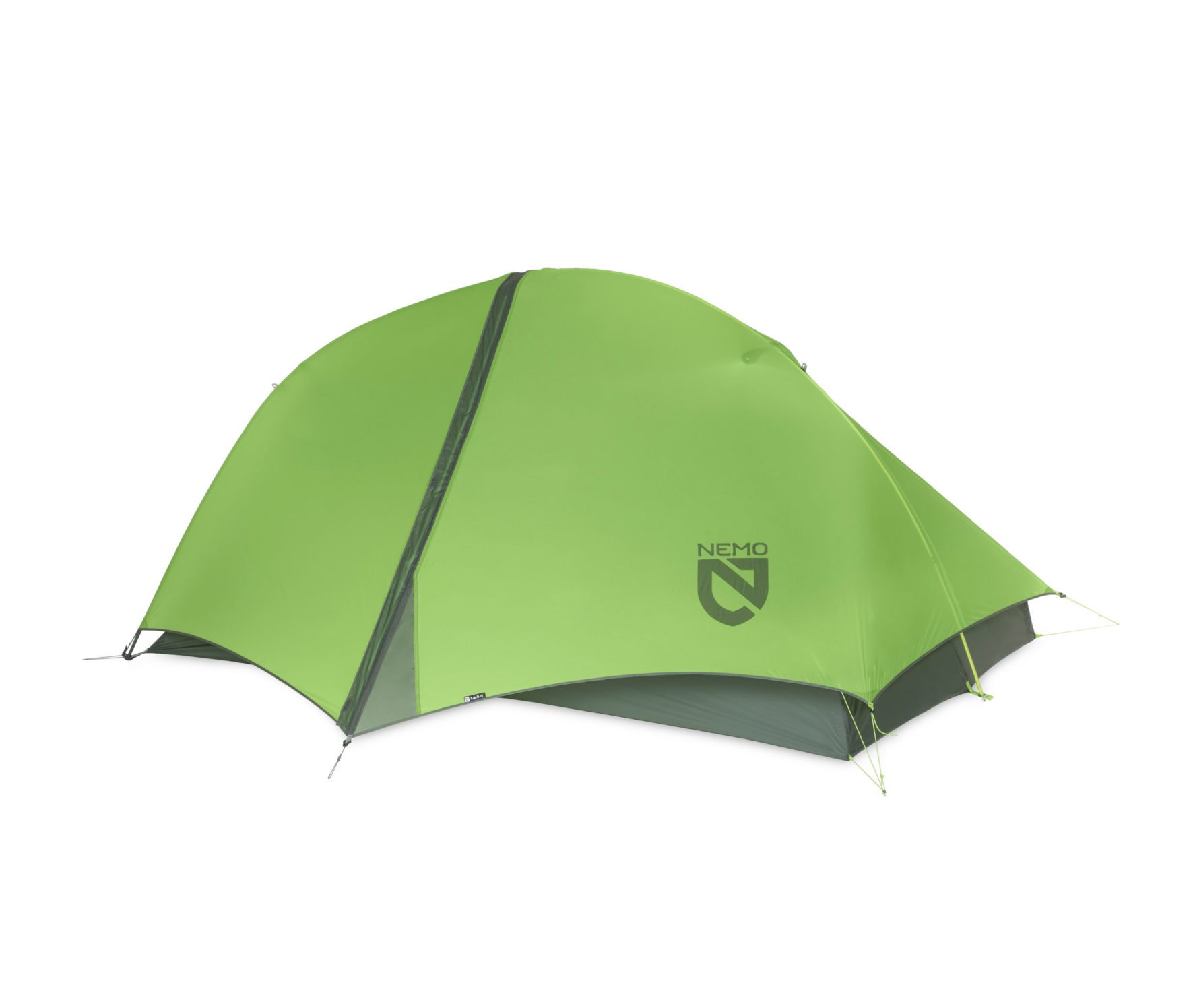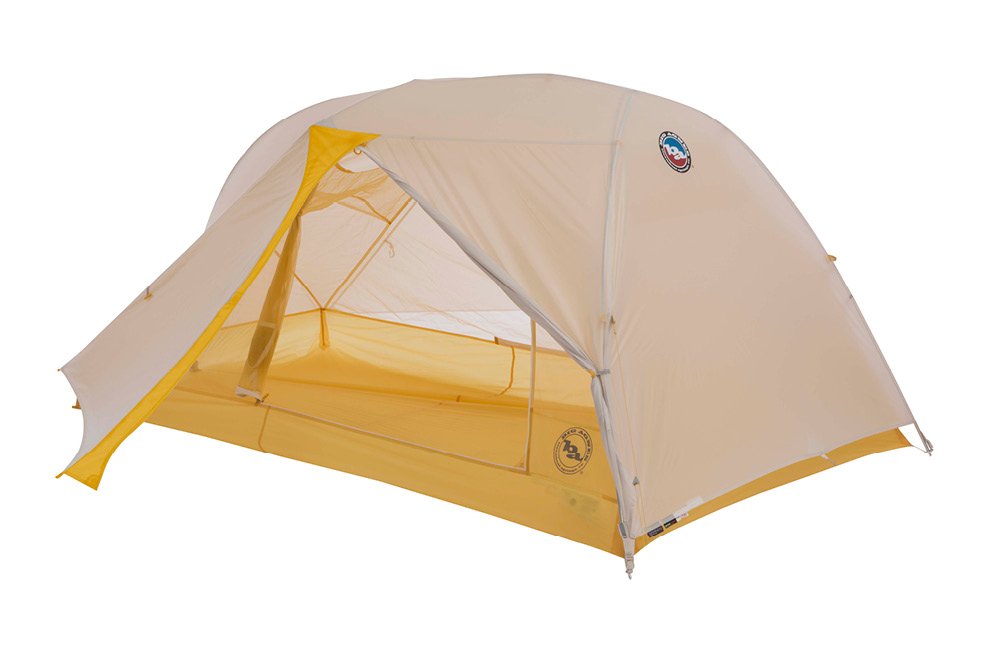Choosing The Right Shelter Size For Your Backpack Hunt
Shelter size is a big deal in the backcountry. Go too small and waiting out a storm for a few days will drive you crazy, but go too big and you might not find a suitable place to pitch it. Choosing the right sized shelter for your hunt will impact your overall comfort and capability so let’s get it sorted out!
Seek Outside Redcliff shown here its natural habitat.
Big Shelters for Backpack Hunts
Large shelters for backpacking offer an entirely different experience. For backpack hunters waiting out storms, they offer a comfortable retreat from the elements while ensuring the inhabitants don’t feel like the walls are closing in after a few hours. Some tipi-style shelters from brands like Kifaru or Seek Outside offer the added benefit of having enough room to both fully stand up inside while including a wood-burning stove for those late-season hunts.
The benefits of a larger backcountry shelter look great on paper but feel even better in real life. The simple feature of having the room to move around, sort through gear, and lounge comfortably without bumping into your neighbor is more than enough reason to accept the additional weight of a large tent. For those willing to pack them, they’re no doubt a game-changer, but there are a few downsides.
Large backcountry shelters take up a lot of physical space. The area required to pitch these shelters can be in excess of 8-10 feet in diameter so it’s important that those hauling these into the backcountry are confident they’ll be able to find a place to make a secure and functional pitch.
Additionally, not all ground is even, flat, or free of debris. There may be some site prep involved before pitching so it’s important to take this into account before pulling the trigger on a larger shelter.
Shelters meant for 4 or more people also take up a decent amount of space in a pack. The larger the tent, the more space it will consume, and when it’s wet, it’ll take up even more real estate.
Large shelters offer a great place to collect your gear, make plans, and warm up from a cold hunt. They feel less like a tent and more like a home and, depending on design, they can be paired with a lightweight wood-burning stove.
For backpack hunters establishing a base camp with a few friends, it’s worth considering adding a larger shelter to the list of gear for an extended stay in the backcountry.
Small Shelters for Backpack Hunts
Small shelters have their place on backpack hunts because of how flexible they are to pitch. The smaller the shelter, the easier it is to find a location to pitch it that suits both the tent and the hunter. They’re much lighter and compact which complements the light and fast hunter who’s always on the move. The downside, however, is they can become a bit claustrophobic if the weather moves in for a few days and the hunter is forced to spend hours on end stuck inside their shelter.
One of the great parts of a smaller shelter is how affordable and convenient they are. Most backpacking brands offer tents that perform great for backpack hunters and come in at a reasonable price and weight. Brands like MSR, Nemo Equipment, or Sierra Designs all make great tents that can handle the rigors of a hunt and they even offer 4 season variants for those late-season hunts where snow loads are possible.
The Reality of Shelter Sizing
Tentmakers tend to overestimate how many individuals can actually fit in a given shelter. Once you add in gear and a person, space gets tight and although you could fit three people side by side in a three-person tent, life is going to be rough and you’d better be willing to snuggle a little with your hunting buddy. In general, sizing is optimized for marketing so use the following as a rule of thumb when estimating how much room there is for “people”
*1P = 1P
*2P = 1P
*3P = 2P
*4P = 3P
Brands marketing tents have to give the buyer an idea of how much space there is, so it’s important to always check those measurements closely and compare them to the measurements of who will be living in the tent. If you’re tall, make sure you find a tent that works for your height. If you’re wide, make sure you check those measurements as well. You and your buddies will last a lot longer in the backcountry if you’re not rolling on top of one another at night so it’s best to er on the side of a larger shelter if possible when sharing.
How to Choose the Right Shelter Size for Your Backpack Hunt
When it comes to choosing the right sized shelter there are a number of considerations. Below are questions to ask yourself when sorting through the possible shelter candidates.
How many people will be living in the shelter?
What is the terrain like where you’re hunting?
Will you be able to find a place to pitch your larger shelter if you go that route?
Are you a base camp hunter or a mobile hunter on the move?
Are you willing to haul the extra weight of a larger shelter?
Are you hunting in the late season and want a wood stove option?
Do you prefer your gear to live inside the tent or outside? If inside, you’ll want the extra space.
Are you a solo hunter or hunting with others?
What’s your budget? Bigger is often more expensive
Do you have the space in your pack for a larger shelter?
If you answer the above questions, you’ll be well on your way to identifying the correct shelter for your hunt. If you need some suggestions on sizing or shelter options, below are a few favorites from experience backpack hunters
Final Thoughts and Buying Advice
Backpack hunting is an ever-evolving process of refinement. Year after year, you’ll find new ways to improve your kit and you’ll add skills that will open doors that were never there when you first started out. Don’t sweat it if you can’t afford the fanciest and most amazing shelter at first. The important thing is that you’re out there getting after it and learning from your experiences along the way.
Choosing the right shelter size greatly depends on how you intend to hunt. If you’re packing up camp each day, then it’s likely best to go with a smaller tent. If, however, you’re establishing a base camp to hunt from, then a larger shelter might be the way to go as it will provide a more livable experience.
If you have no idea what you need, shoot for the middle ground. Purchase a 3-man shelter from a quality brand and call it a day. Run that tent for as long as it suits your needs and when it’s time to add a second shelter to the mix, you’ll know what you’re looking for.
Emory, By Land
Thanks for stopping by the website and checking out this article! If you have any questions for me, you can leave a comment below or shoot me a personal message at emory@byland.co.
Donate and Support
By Land is independently published meaning no one pays to have this content written or created. If you’ve enjoyed this article, the website, resources, or other By Land content and want to become a supporter, please consider making a one-time donation. 100% of each donation will go right back into operational costs so I can continue to bring you the same great content for years to come!
Thank you!
Suggested Tents and Shelters
MSR Hubba Hubba NX 2p (3 Season)
Designed for backpackers who need a tent that can do it all while still being compact and lightweight, our bestselling MSR Hubba Hubba NX 2-person tent feels as light and efficient to use as it does to carry. From its spacious interior to its quick setup, this tent redefines lightweight livability.
Nemo Hornet 1p and 2p (3 Season)
For those looking for an ultralight shelter with greater volume, Hornet™ offers the ultimate in livability and comfort. Top shelf fabrics and a minimal pole structure shave every ounce possible, while the latest updates and new patent-pending Flybar™ volumizing clip add even more room without adding any weight.
Big Agnes Tiger Wall UL2 (3 Season)
The Tiger Wall UL2 Tent is BA’s lightest two-door, two vestibule, technical backcountry tent now redesigned using solution-dyed fabric that is highly resistant to UV fade and drastically reduces energy consumption and water use during manufacturing, a process that is better for the environment and improves the quality of the tent fabric. Single pole architecture using DAC Featherlite materials creates a simple, yet strong and sturdy structure you can rely on through multi-day trips. The Tiger Wall UL2 makes tent life easy with weight savings for gram counters in mind for your three-season adventures.
REI Flash Air 2 (3 Season)
You can pitch it with its own poles—or use your trekking poles—and at under 2 lbs., you barely know it's in your pack.
Hilleberg Nallo 2p or 3p (4 Season)
The Nallo Models are known for their light weight. But it’s their remarkable strength that makes these tents the first choice for anyone needing the lightest weight tents that still offer all-season, all-weather functionality. This includes hikers of all types, of course, but also wilderness photographers, climbers, hunters, and other adventurers who want to get more out of carrying less.
Stone Glacier Skyscraper 2p (4 Season)
The Skyscraper ultralight 2P tent is a burly 2-person, 4-season double-wall tent with a minimum trail weight of 4lb 4oz. At the heart of the Skyscraper 2P is the innovative WebTruss™ technology. This unique construction system provides unmatched strength, a low wind profile and makes pitching the tent a breeze. We know keeping gear dry is vital in the backcountry and the Skyscraper 2P has two extra-large vestibules (11 sq ft + 11 sq ft) to accommodate all your gear. In short, the Skyscraper 2P is a bomber, a versatile ultralight 2-person backpacking tent designed for the mountain hunter.
Kuiu Storm Star 2p
Lightweight, durable, and storm-worthy, the Storm Star 2P Tent is a free-standing, double wall, 4 season tent with an exterior pole design.













